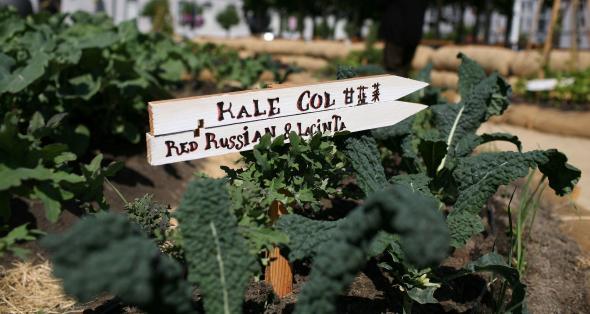“Imagine two of the most popular vegetables—kale and Brussels sprouts,” writes Modern Farmer’s Heather Hansman. “Now imagine Frankenstein-ing them together to create one super vegetable.”
This super vegetable, which was developed by vegetable breeders in the U.K., will be sold in the United States under the trademarked name “Kalettes” beginning this fall. (It is known as a “flower sprout” across the pond.) According to Hansman, it possesses “kale-like leaves on a Brussels-y stalk.” It also possesses the stupendous fortune of being a hybrid of the two vegetables that arguably have the most cult-like of foodie followings. When British company Tozer Seeds began experimenting with mixing the two cruciferous strains 19 years ago, kale wasn’t yet cool, so Tozer had no way of predicting the buzz-worthiness of its invention.
I am an enormous fan of both Brussels sprouts and kale. I will eat either of them in virtually any form you put in front of me. But I don’t have high hopes for Kalettes, for reasons that will become clear when you see a picture of them.
According to Kalettes’ Facebook page, the cross-breed is “a fresh fusion of sweet and nutty … with the best flavors of kale and Brussels sprouts.” Great! Except for that flavor isn’t the main reason I eat either kale or Brussels sprouts—texture is. There is nothing like biting into a properly cooked Brussels sprout that’s dense, hearty, and almost starchy in the middle. (Brussels sprouts are best served whole—shredded Brussels sprouts lack the textural appeal of intact sprouts.) And a lightly massaged leaf of kale, after the thick, woody stems have been removed, is a delicate marvel between the teeth.
Kalettes appear to have none of kale’s or Brussels sprouts’ textural charms. They are light and poofy, not dense like Brussels sprouts. And their leaves are attached to substantial-looking kale-like stems. In other words, Kalettes have dispensed with the best part of Brussels sprouts (the densely packed leaves) and substituted the worst part of kale (the thick, unpleasant stems).
I will be happy to be proven wrong once Kalettes appear in my local produce aisle. But I suspect that while kale and Brussels sprouts respectively have staying power, Kalettes will be a flash in the pan.
